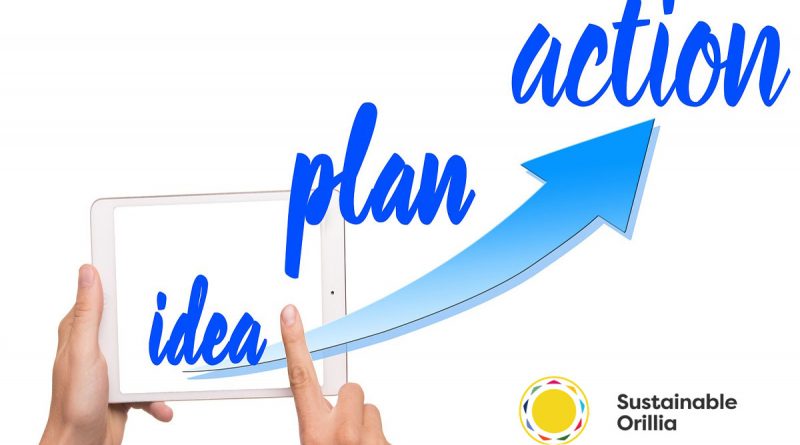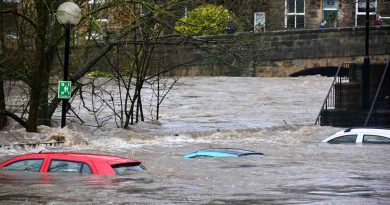Sustainable Orillia’s Tip Of The Week

Newest tips on top, check in every Saturday morning for new tips. If you have an idea to reduce waste, treat the environment better, or reduce carbon footprint that works, send it to Info@sustainableorillia.ca with the subject line: I've Got A Tip.
WINTER AT NIGHT
February is WinterActive month. It’s intended to encourage physical activity through play in the elements. Most outdoor activities typically embrace snow and colder temps during daylight hours, but what if your adventurous spirit didn’t have to end when the sun goes down? Let’s consider some options for getting active outside under the cover of night for a different kind of outdoor experience. If we’re going to make our community and our planet sustainable, we’ll need to get to know it in all its features, its rhythms and its wonders.
Check weekly weather forecast to find a clear night to take a stargazing walk. You’ll be able to see basic constellations with the naked eye (although binoculars or a simple telescope can certainly enhance your view, but really, neither are necessary). The plough, aka Big Dipper, is an easy-to-identify group of seven stars whch, once spotted, serves as a marker from which you’ll be able to locate the North Star, aka Polaris because it sits directly over the North Pole. Find a sky map online or consult an astronomy book for beginners to help guide your search. It’s truly remarkable how taking time to simply look up at the night sky gives us pause to reflect on the infinite beauty of the natural world.

Following the lunar cycle is another spectacular way to engage interest in the great outdoors. Plan a hike, snowshoe or X-country ski under the next full moon. February boasts the full Snow Moon on the 27th around 3 a.m., but will likely be best viewed the evening of the 26th. Just as the moon phases influence the ocean’s tide, they are anecdotally believed to influence an energetic shift in people. Some consider the full moon a time to release old energy and welcome new, as well as an opportunity to express creativity and gratitude.
Create a comfortable backyard viewing area for some post night-excursion R&R the whole family can enjoy. If you live in an area that permits fire pits set one up and bring blankets for added warmth. Make a night of it by preparing snacks such as a charcuterie board, S’mores and hot beverages. If a fire isn’t an option where you live, try illuminating your space with lanterns or homemade tiki torches.
There are of course some safety measures to consider when venturing anywhere outdoors at night. Be sure to wear some reflective gear and keep to familiar territory. It’s always a good idea to let others know your planned route and take a cell phone with a location tracker along in case of emergency. There are helpful apps like What3words that have proven to be lifesavers.
Fresh air therapy is so beneficial to both mind and body. By conceptually expanding the hours of enjoyable outdoor playtime we can help make outdoor active living more attainable for those working the bulk of daylight hours. Think of it as a paradigm shift to promote a fresh perspective on our natural surroundings, strengthen our relationship to it and foster a desire to protect it.
Sustainability begins with a full appreciation for our planet and all that it offers us. And remember, the great outdoors never really closes.
Tip by Rosanna Shillolo
WINTER IS FOR THE BIRDS
Winter can easily become a time of boredom and shuttering ourselves indoors, so it helps to be reminded there’s never been a better time to get outside to explore and connect with nature. Lockdown restrictions have severely limited our entertainment options but if this steers us back to nature then everyone and our furry and feathered friends stand to win. Whether you make a point of taking regular nature walks, are inspired to become a birder, or try your hand at nature photography, a world of possibility and real time entertainment awaits
To get an idea of who is living in your neck of the woods head outdoors after a fresh snowfall for clues in the form of tracks. If you find some but aren’t sure what made the impressions, try consulting the Canadian Wildlife Federation to assist in your investigation. Not uncommon to roam our area this time of year are squirrels, rabbits, fox, mice, skunk, raccoons, on occasion deer, or sometimes even moose. We can tell a lot about an animal’s behaviour by following its tracks.
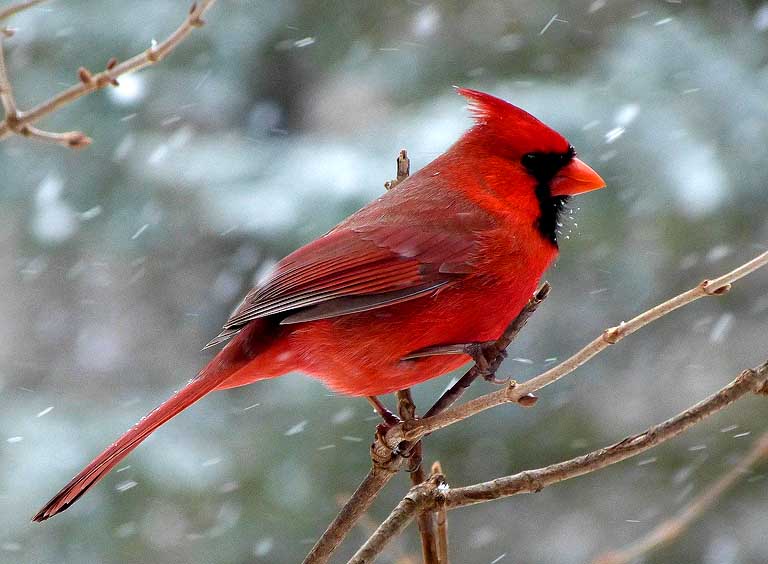
Nature photography can be an enjoyable hobby and a useful tool to observe birds and mammals unique to our region. Pictures last longer than memory, are great for journaling and can provide greater detail than what we initially recall. There are several free apps, the most popular being iNaturalist, to upload pics for recording, mapping and identify sightings. Observational data is then shared to an open platform to assist the public, conservation agencies and scientific researchers. It’s an interactive way to engage in and learn more about our ecosystem.
Discover the world of birding, once a niche pastime, it’s experiencing a surge in popularity because it’s accessible and can be enjoyed at a social distance. According to Swan Lake Outdoor Education Centre’s Twitter, the benefits of birding include strengthening connections with nature, fostering curiosity, offering opportunities to practice patience and acceptance.
Some winter birds to look out for in our area are blue jays, cardinals, chickadees, nuthatches, grosbeaks, finches, sparrows, juncos and even the elusive snowy owl. Visit the library for books on aviary identification, or you can reference any number of fantastic resources online such as Wild Birds Unlimited, eBird and the Cornell Lab of Ornithology. Some websites also have free interactive apps and live camera feeds such as Project Feederwatch allow you to get incredibly up-close views.
If you want to attract birds, try providing them sanctuary in the form of a feeder or birdhouse. This will encourage their survival and increase the frequency of their visits. If you’re looking for a project, The David Suzuki Foundation offers comprehensive step-by-step instructions on how to build a fat block bird feeder. You can get creative by upcycling materials from your blue box such as milk cartons and plastic bottles to offer food and shelter. The type of food you offer will attract certain types of birds. For example, cardinals prefer shelled peanuts and dried fruit whereas jays and woodpeckers are partial to sunflower seeds. Be sure to place a feeder or house a minimum of 5 ft from any windows. For extra measure, you can apply decal stickers to windows to help prevent collisions.
Tip by Rosanna Shillolo
GO OUTSIDE AND PLAY
“To appreciate the beauty of a snowflake, it is necessary to stand out in the cold.” – Aristotle
The COVID lockdown may have you feeling cooped up, but a cure for cabin fever might be as simple as child’s play.
We know fresh air and exercise is good for body and mind at any age, but even more beneficial is engaging in recreational activity outdoors. This is more important than ever now virtual school and working from home is the new normal for many. It means we’re more dependent on technology and spend too many sedentary hours indoors.
Increased screen time may negatively impact our relationship to the beauty and wonder right outside our door. Not only is play time good for mental, physical and social development, it also improves cognition, communication skills and creativity which helps develop well rounded individuals. When immersed in playful outdoor activity we can gain a deeper connection to and concern for the natural resources that surround us. Sustainable play is a celebration of our natural landscape in ways that are whimsical and fun without negatively impacting the ecosystem where we live.
There are plenty of sustainable ways to engage in play and it’s a good idea to schedule recesses throughout the day to help build the healthy habit of getting outside regularly. The fresh air breaks will leave you feeling energized, refreshed and more focused for your return to school or work.
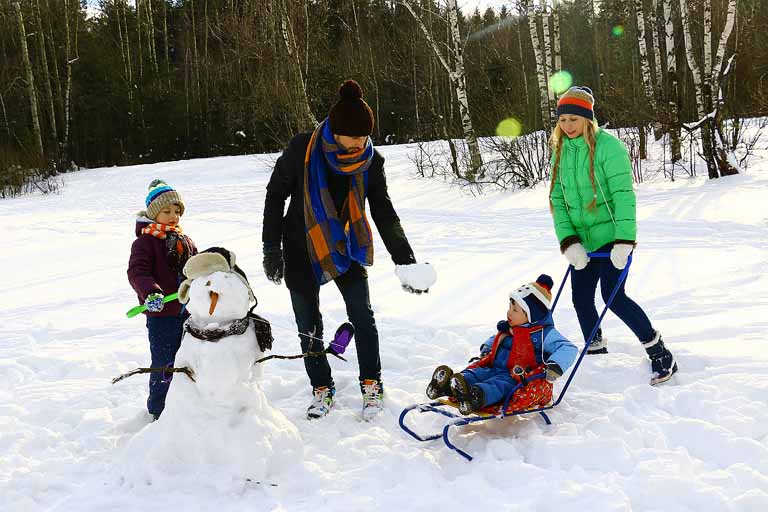
Few things awaken childlike wonder and curiosity like building a snowman (snow person). Upcycle old clothing and materials to outfit your Frosty and proudly display it in your front yard to spread cheer and inspire the neighbourhood. Your creativity may lead to a whole community of snow people, as Severn Township is showing us these days. Think outside the traditional three stacked balls of a snowman and express yourself by making a snow sculpture instead. Make it a family affair or even divide household members into teams for some friendly competition. Constructing a snow fort or maze is a great way for kids to learn to collaborate and communicate their ideas. Scavenger hunts encourage exploration and closer attention to our surroundings and the wildlife that inhabits it. Tobogganing can be excellent exercise and is guaranteed to bring big smiles to rosy cheeks.
You don’t always need a plan or structure to play. Combat feelings of stress by tapping into a more carefree, child-like spirit. Try lying on your back in the snow and looking up to the vastness of the sky and clouds floating by. Observe the birds singing in trees while squirrels defy gravity among their branches. Spark joy catching snowflakes on your tongue or give in to the playful urge to make snow angels. When we’re immersed in nature our appreciation for it grows organically along with the sense that we’re a part of, and not exclusive to, this big beautiful world in which we live.
If it can be said silver linings exist amid uncertainty and lifestyle upheaval brought on by the pandemic, then opportunity to reacquaint ourselves with nature is surely one of them, even if it is by default. Perhaps 2021 is the year we commit to enjoying more of our natural playground and, as a result, we hopefully strengthen our efforts to help conserve our planet.
Tip by Rosanna Shillolo
LOCKDOWN TIME EQUALS LEARNING TIME
There aren’t many positive things one can say about the ongoing pandemic which restricted many of our everyday activities for almost a year now. That being said, COVID-19 has triggered a significant behavior change around the world, demonstrating our ability to adapt rapidly when we are at risk. Despite this new-found awareness and ability to change behavior, can and will we bring this same mindset to head off the looming crisis posed by global warming? And how can we use our time now, during this lockdown period to inform and prepare ourselves to tackle the climate crisis?
Yes, we can all do something and this is the right time to expand our knowledge of Climate Change and what we can do about it. The combination of winter weather and currently remaining in our homes presents the ideal moment to pursue this knowledge. Whether you want to learn more about global warming or for ways to live more sustainably, there are many high-quality books and films available to broaden your understanding of what is happening, and what science tells us has to happen to reverse this dangerous trend.
Here are some titles, which if you haven’t already read or seen, we recommend as a good start.
Books:
A Good War: Mobilizing Canada for the Climate Emergency. Authored by Seth Klein, a public policy researcher, based in Vancouver, the book demonstrates how wartime thinking and community efforts can be applied today to help Canada reduce its Greenhouse Gas emissions. The book is structured around lessons from World War II – the last time Canada faced an existential crisis.
Silent Spring. First published in 1962, Rachel Carson’s Silent Spring is considered the catalyst for starting the global grassroots environmental movement. As relevant today as it was almost sixty years ago, Carson’s main point was to demonstrate the powerful and often negative effect humans have on the natural world. It underscores how important every species is to the survival of our own species, including our currently imperiled friends, the bees.
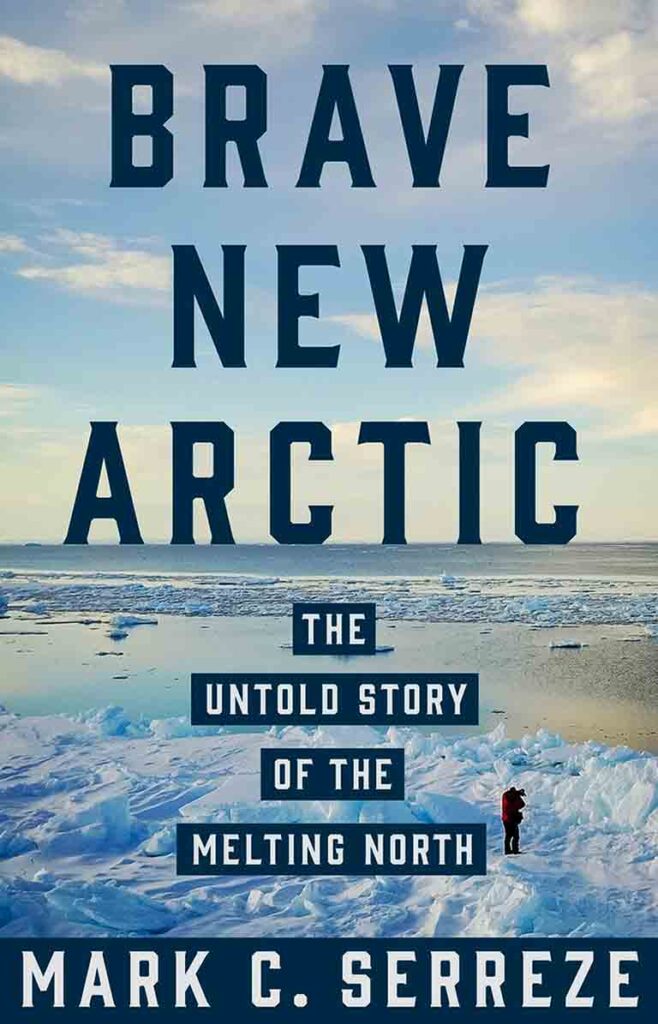
Brave New Arctic: The Untold Story of the Melting North. Canadians will be interested in this insider account of how scientists unraveled the mystery of thawing Arctic ice in the 1990’s. Mark C. Serreze, a geographer and director of the U.S. National Snow and Ice Data Centre, brings their challenge to life for readers. Sadly, our polar bear population doesn’t need to read about the diminishing ice floes in the Arctic, they are living it, and unless we do something now, we will soon be experiencing the effects as well.
Younger readers can benefit from broad assortment of books on the subject. They appeal not only young adults and children, but older generations as well. Here’s a sampling of four titles:
Owl Moon. Jane Yolen tells a gentle story of a young girl and her father visiting the woods on a clear winter night in search of the great horned owl. The illustrations and the prose capture the stillness and awe of nature. The 1988 Caldecott Medal winner is a timeless and beautiful story is available in audio form on the internet, which is ideal for snuggling up with your younger children on a winter’s night.
Greta’s Story: The Girl who went on Strike to Save the Planet. Written by Valentina Camerini, it is the inspiring story of the young eco-activist whose persistence sparked a global movement – proving you are never too young to make a difference. Ideal for young people ages 8 to 12, the book speaks directly to this generation and encourages their activism and their hope
The Lorax. Dr. Seuss chronicles the plight of the environment with a message as real today as it was when written fifty years ago. While Dr. Seuss’s imaginative language, prose and characters fascinate even the youngest reader, the story has meaning for readers of all ages.
It’s Getting Hot in Here: The Past, Present and Future of Climate Change. Bridget Heos tackles the issue of global warming head-on for a teen audience. She examines the science behind it, the history of climate change on earth and the ways humans have affected the current crisis we face. It shows how interconnected we are with everyone else on the planet and with those who will follow us. Despite the grim possibilities, this book provides readers with hope and tools on how they can make a positive difference.
Documentaries:
2040. Concerned about his young daughter’s future, filmmaker Damon Gameau traveled the world in search of new approaches and solutions to climate change. This 92 minute documentary looks at the effects of climate change over the next 20 (now 19) years. It is an exercise in fact-based dreaming – encouraging creative problem solving and how we can use technologies that exist today to reverse the effects of climate change.
The Biggest Little Farm. A documentary film telling the true story of two dedicated environmentalists, and how their commitment to diversified farming turned 200 acres of arid scrub land into a paradise in under ten years. Lots of fun for all ages, this 2 hour 32 minute film is a charming presentation of how individuals can, with commitment, make a difference and become a model for others to follow.
Cowspiricy, The Sustainability Secret. Filmmakers Kip Andersen and Keegan Kuhn produced this shocking, yet humourous documentary. The 91 minute film explores the environmental impact large-scale farming has on our planet and offers a path to global sustainability for a growing population.
We hope your appetite is whetted, as there’s never been a better time to expand knowledge of sustainability and there’s never been a more critical time for us to do so. Your recommendations and reviews of relevant material are always welcome at Sustainable Orillia. Over the next few months, as we update our web-site these recommendations and others will be posted to an ever-expanding list of reading and viewing options. Visit us for more information on how you can participate.
IT’S FREEZING, TIME TO GET OUTDOORS
February is Winter Active month here in Orillia. This presents a golden opportunity to improve our physical literacy, which means developing the motivation for, and understanding of, different types of beneficial movement.
The shorter days and sub-zero temperatures might make some want to hibernate and avoid winter altogether, but there really are so many perks to the season we can learn to embrace. Although the pandemic has resulted in the restricting of some activities we might normally enjoy during the colder months, there are great outdoor options that just might give you a refreshing sense of optimism while developing an even greater appreciation for the importance of preserving our natural environment. .
It’s vital to both our physical and mental well-being to get a minimum of 20 minuntes of sun exposure daily to help maintain healthy levels of Vitamin D. This sunshine vitamin boosts our immunity and helps to prevent and treat Seasonal Affective Disorder (SAD), also referred to as the winter blues. This seems more important than ever given the stress and challenges COVID-19 has brought to our lives. Besides, Netflix only has a finite number of shows, and it’s wise to balance the binge watching with some invigorating fresh air fun.
The easiest and most accessible activity for most people is walking or hiking. Fortunately in Orillia, we have the Lightfoot Trail system which runs 15 kilometres along the northeast end of the city. The 9.5 km portion that is paved is known as the Millennium Trail, which connects our beautiful major parks and is a segment of the Trans Canada Trail system. All you’ll require is some warm apparel. Optional equipment could be Nordic walking poles to enhance physical output (the added arm movement increases heart rate) or added grip tracks on the soles of your boots to prevent slipping. Both options offer added stability.
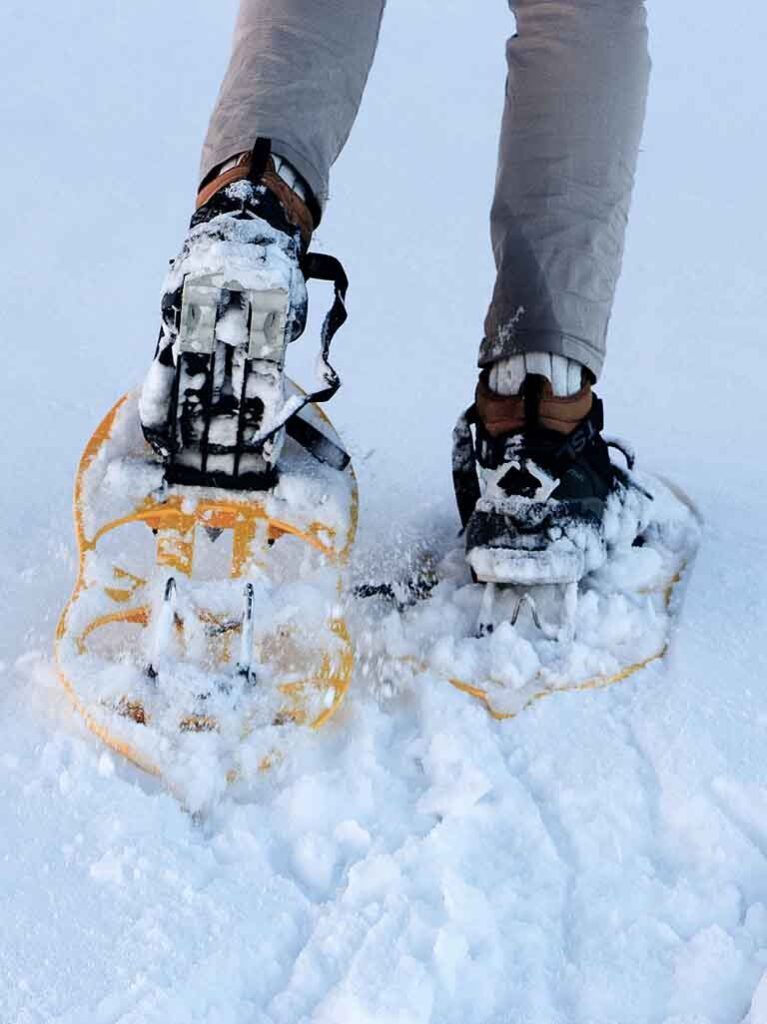
Snowshoeing is a slight progression from walking but appropriate for all fitness levels. Snowshoes allow you to trek over deeper snow without sinking. Again, if you use poles, you’ll benefit from greater balance and the arm pumping boosts circulation, which helps keep you warm. Tudhope Park and the Leacock property are lovely scenic areas to explore.
Ice skating can be great fun if you have the equipment, and given we are the city of twin lakes, there is always potential for a natural local rink. Bass Lake is known to have a smooth surface accessible along Line 15. Just be sure to stay close to shore and bring a shovel to help with snow clearing. Always pay attention to public advisories from local authorities regarding ice safety.
Now for a less conventional idea: snowga. Simply put, it’s the practice of yoga done in the snow. A uniquely fun activity suitable for any fitness level. All that is required is snow, an open mind and a playful spirit. Snow pants aren’t a bad idea as they’ll keep you warm and allow you to enjoy a more uninhibited experience- think back to when you were a child taking delight playing in the magical white stuff. Sunrise Yoga Studio will be offering two snowga experiences, Feb 20th and 28th, 1pm at the Leacock property to raise money for The Sharing Place Food Centre. This 6th annual karma event (any cash donation to participate) continues to grow in popularity although due to the current restrictions on public gatherings, it might look a little different this year. If the lock down does not lift by the proposed dates, it will be run virtually so those interested can still participate from their own back yards. For more information and to register, email info@sunriseyogastudio.ca
Hopefully these ideas will motivate you to celebrate our winter wonderland safely and as much as possible, sustainably, in the great outdoors. And remember, keep your face always toward the sunshine, and the shadows will fall behind you.
GET HAPPY, STAY HAPPY
“I have decided to be happy because it is good for my health.” (Voltaire)
As greetings of Happy New Year fade, let’s take a moment to explore what happiness can mean and how it relates to realizing a healthier life-style and ultimately a healthier planet. The point of this message is regardless of our circumstances we can be happy, or happier, and there are some straightforward ways to achieve that goal or state – for ourselves, for the people we love and for the planet.
Action for Happiness is an organization dedicated to promoting happiness. They provide friendly tools and tips to help realize greater happiness. Their guidebook, Ten Keys to Happier Living is available free and lays out the following ten factors:
- Give – do things for others
- Relate – connect with people
- Exercise – take care of your body
- Awareness – live life mindfully
- Trying Out – keep learning new things
- Dream – have goals to look forward to
- Resilience – find ways to bounce back
- Emotions – look for what’s good
- Acceptance – be comfortable with who you are
- Meaning – be part of something bigger
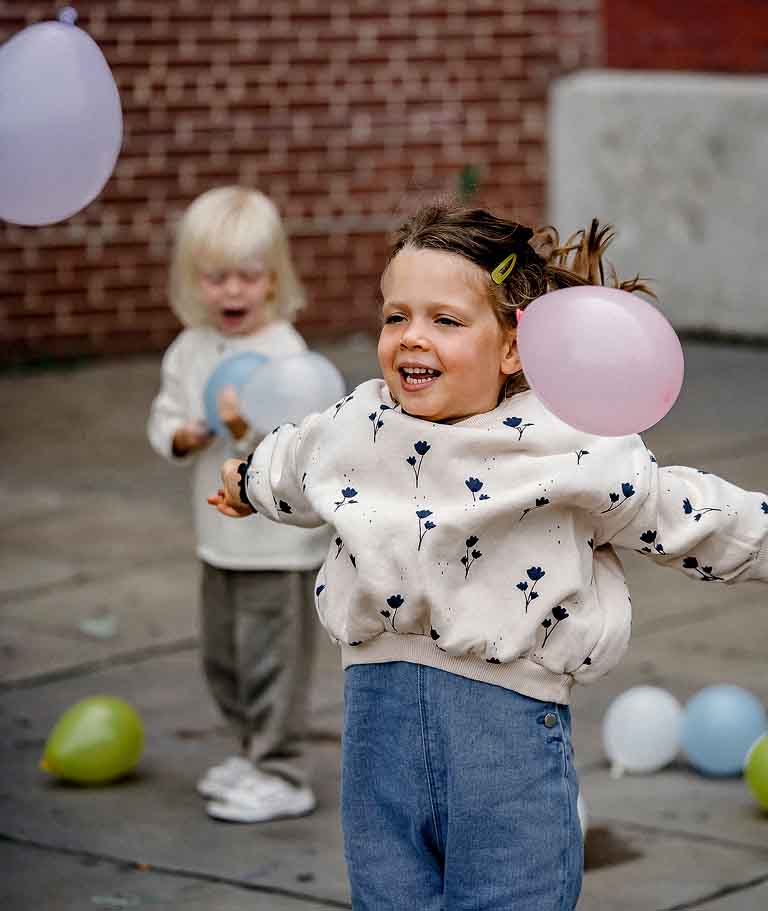
Each principle merits consideration and readers are encouraged to go to Action for Happiness’s website to get more information on how to challenge and reward ourselves every day in the pursuit of happiness. From Sustainable Orillia’s perspective, happiness is a very sustainable goal as well. The ten factors listed above are all eco–friendly, and relate directly or indirectly to improving the quality of life and the sustainability of our environment. Let’s explore three of them a bit more to reinforce that correlation.
Awareness. Challenging ourselves to make small changes takes mindfulness and ultimately leads to higher levels of satisfaction with ourselves and the contributions we are making. Mindfulness has become better understood over the past few years. We are becoming more aware of our intent and the effect our actions have on others and our environment. Increasingly we ask ourselves a version of this question is this action going to move us closer to sustainability, or further away?
Trying Out. Nothing is more stimulating than continuous learning and development. At Sustainable Orillia we consistently encourage interested readers to try new behaviors, to take those small steps that will move us towards greater sustainability. Equally important, there is no better time than now, while we are being asked to stay in our homes, to learn more about climate change and what each of us can do to help avert the looming crisis.
Meaning. We are already part of something bigger; as members of this community and of this planet. Most of us have children, or at a minimum we know some children that we like, and that’s all the criteria you need to be part of this global movement to raise awareness and change behaviors that will do nothing less than save this planet for those children and all the children who follow.
Along with the other seven factors we realize that happiness isn’t a goal in and of itself; nor is it measured in money, position or possessions. Rather, it is the by-product of participating with our families, our neighbours and community in the pursuit of collective, sustained well-being; a goal that translates into a greener, more sustainable and happier life for us all.
Our thanks to the Action for Happiness for the use of their materials.
A QUIZ, PART 4, THE ANSWER MY FRIEND IS…
To reduce our impact on the climate and avert disaster, it’s going to take more than ditching single-use plastic, eating less meat and planting more trees. The most effective ways that individuals, policymakers and businesses can reduce our carbon footprint might surprise you.
Let’s see how much you know about the climate consequences of generating electricity in Orillia and across the world. The group Project Drawdown has ranked the most effective climate change solutions. Which ones do you think would have the biggest effect on curbing climate change.
- Invest in nuclear power
- Capture the power of the waves
- Build solar farms
- Harness wind energy on land
Here’s how Project Drawdown ranks the choices:
1. Harness wind energy on land
2. Build solar farms (just over 40% as effective as #1)
3. Invest in nuclear power (20% as effective as #1)
4. Capture the power of the waves (10% as effective as #1)
Orillia is blessed with an abundant supply of water power, but much of the world isn’t so lucky. Wind farms can be built quickly, and the land they sit on can be used for farming or grazing simultaneously. Today, 314,000 wind turbines supply nearly 4% of global electricity, and soon it will be much more. While solar has potential as a dominant electricity source, Project Drawdown says investing in onshore wind farms offers the greatest reduction in CO2 emissions.
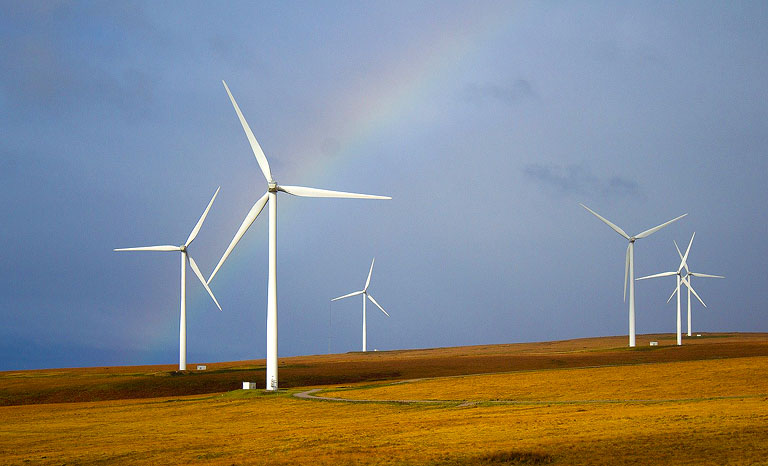
The wind industry is marked by a proliferation of turbines, dropping costs and better performance. In many locales, wind is either competitive with, or less expensive, than coal-generated electricity and it has no fuel costs or pollution. Ongoing cost reduction will soon make wind energy the least expensive source of electricity, perhaps within a decade.
Of course, the variable nature of wind means there are times when turbines are not turning. Wind energy, like other sources of energy, must be part of a larger system. Investment in 24/7 renewables such as geothermal, energy storage, transmission infrastructure, and distributed generation is essential.
Nuclear is often touted as a green electricity source, but its capacity to curb global warming pales in comparison to renewable sources. Currently, 29 countries operate nuclear plants. They produce about 11% of the world’s electricity. Nuclear is expensive, and the highly regulated industry is often over-budget and slow. While the cost of virtually every other form of energy has gone down over time, the cost of nuclear is four to eight times higher than it was four decades ago.
With nuclear power, there is a climate dilemma: Is an increase in the number of nuclear power plants, with all their flaws and inherent risks, worth the gamble? Or, as some proponents insist, will there be a total meltdown of climate by limiting their use?
We’ll have one more quiz in a future “tip” from Sustainable Orillia (with thanks to Project Drawdown and Drew Kann, Will Houp, Judson Jones, and Sean O’Key).
A QUIZ, PART 3, THE MOST EFFECTIVE IS…
It will take more than fewer airplane flights to reduce our impact on the climate and avert disaster, The most effective ways individuals, policymakers and businesses can reduce our carbon footprint might surprise you.
Let’s see how much you know about the climate consequences of heating and cooling our homes in Orillia and across the world. The group Project Drawdown has ranked the most effective climate change solutions.
Rank these four solutions below according to which ones you think would have the biggest effect on curbing climate change.

- Install green roofs
- Use smart thermostats
- Switch to LED light bulbs
- Design more walkable cities
Here’s how Project Drawdown ranks the choices:
- Switch to LED lightbulbs – pretty effective
- Design more walkable cities – less than half as effective as #1
- Use smart thermostats – about one-third as effective as #1
- Install green roofs – one-tenth as effective as #1
Designing cities to prioritize walking helps cut emissions from driving, but according to Project Drawdown, some even more effective ways to reduce energy use can be found at your local hardware store.
LED lightbulbs cost more, but they use far less energy than incandescent and compact fluorescent bulbs, and they last longer. Installing smart thermostats can also offer major climate benefits.
What will we do in our own households and community to reduce our carbon footprint? We’ll have more quizzes in other categories in future Tips of the Week. from Sustainable Orillia.( thanks to Project Drawdown and Drew Kann, Will Houp, Judson Jones, and Sean O’Key)
RESOLVED – YOU CAN ACT GREENER
If you’re like most of us, after the challenges of 2020 you definitely deserved to treat yourselves this past holiday season. We did that knowing with 2021 just around the corner better times are ahead and we have a clean slate to make and remake our annual New Year’s resolutions.
According to several surveys the top two resolutions made each year are to lose weight and exercise more. In a typical year (and admittedly New Year’s 2021 isn’t a typical year), over 60% of people make resolutions to eat healthier. Most of us take on the challenge with vigor and determination, encouraged by non-stop fitness, weight loss and low-calorie food advertisements filling the airwaves every January. Unfortunately, one’s resolve often flags and by month’s end most of us quietly go back to our old habits. Perhaps we can give our motivation a lift this year when we consider typical New Year resolutions can be more than about a healthier lifestyle, they can also be about creating a healthier planet. With only three simple resolutions, you will not only realize the benefits of a healthier lifestyle, but you’ll be doing it sustainably.

First – resolve to reduce meat in your diet, particularly red meat. Migrate to a more plant-based diet. We know that this can be a sore spot for many folks. More than a year ago Sustainable Orillia published a tip on how cutting back on red meat in our diets helps reduce greenhouse gas emissions. We got quite a reaction; some supportive, but to put it mildly, most were unenthusiastic.
Time to try again as acceptance plant-based diets are healthier, less expensive and better for the environment continues to rise. We aren’t suggesting that red meat be eliminated entirely from our diets, simply reduced. Given Canadians consume close to 77 pounds of red meat on average each year there is room to trim back. The recently updated Canada Food Guide emphasizes the benefits of plant-based food, and encourages Canadians to limit their red meat intake to non-processed and lean red meats. We believe this trend will continue and more Canadians will see health and environmental benefits, particularly now as food producers have substantially improved the choice and quality of consumer meat and protein alternatives.
Second – Resolve to leave your car at home more often. Walk, use your own power to get from one place to another. The more we resist using our car the healthier we and the world will be. Town planners call this movement, active transit and communities like Orillia are promoting it with more and improved bike lanes, nearby hiking trails and so on. Winter offers additional active transit options like snow-shoeing and cross-country skiing, two more human-powered means to get across town during winter. This resolution is accessible to most. All one needs are some good walking shoes or boots. Happily, these are activities we can pursue during COVID-19 with immediate benefits, including reduced road congestion and saving money on gas and parking.
Third – Resolve to start a vegetable garden. Not right now of course, but when you can and where you can in the spring. Kudos to those of you who already grow your own vegetables; as you already know, with the right conditions and care, a 6’ x 10’ backyard garden can yield up to 300 lbs of fresh, healthy mixed vegetables throughout the growing season. Keeping it tilled, weeded and harvested is a satisfying way to stay active. If you don’t have a back yard Orillia has several community gardens that you can look into. Barrels, window-boxes and ledges are another option for those of us with limited space inside or outside. As many of you know first-hand there is nothing like eating food you have grown from seed yourself – it’s satisfying and good for you in every way.
If we all adopted and followed through on just these three resolutions for 2021 there’s a good chance by the time 2022 rolls around most of us will be able move on from our traditional resolutions and focus on how to further a healthier quality of life while continuing to work towards a healthier planet. Happy New Year to all from Sustainable Orillia.
TAKE PLASTIC OUT OF PET CARE
Did you know that there are almost 6 million dogs and 8 million cats in Canada? We love our pets, but just like humans, caring for pets can generate a lot of plastic waste which ultimately ends up in landfills or oceans. It’s not a good thing, so here are a few tips to make your pet’s lifestyle more eco-friendly:

- Use stainless steel or ceramic bowls for food and water
- Look for bamboo kitty litter trays (or other natural materials) and forego plastic liners.
- Look for the increasing number of biodegradable kitty litter options coming onto the market that will make dealing with our cats’ waste gentler on the environment.
- Take a close look at the packaging for your dog or cat’s food. Some of those larger bags are not recyclable and we should give them a pass if possible. The best alternative is to find an open-bin supplier for your pet food and do away with single use packaging all together.
- Make or get a wooden dog house, instead of a metal or plastic cage,
- Look for toys made from natural materials, like bone, rubber or ropes
- Use biodegradable bags to pick up pet waste.
The eco-friendly disposal of pet waste is another area that deserves attention. According to the City of Orillia website, pet waste accounts for approximately 16% of collected waste in Orillia, the equivalent of about 380 cars. It’s currently not accepted in Orillia green bins, which places more responsibility on pet owners to find sustainable solutions for handling pet waste. Here are some options to sustainably dispose of pet waste.
HAVE A GREEN CHRISTMAS
For most this holiday season will be like no other we’ve experienced to date. As the holidays draw near, despite the ongoing presence of COVID-19 across our communities and the need to abide by public health guidelines, we are cheered by thoughts of those delicious, special meals we traditionally share with friends and family at this time of year – it will just be a little smaller group this year.
Unfortunately, the environmental crisis won’t be taking a holiday. However, with a little planning we can ensure that our holiday fare is as delicious as ever, with a sustainable touch.
Before sharing some practical tips, let’s talk about food waste on a more global level. As has been mentioned many times, food waste is a significant contributor to greenhouse gas emissions. World-wide, it is estimated that there are 1.3 billion tonnes of food wasted each year, which in turn produces enormous amounts of carbon dioxide equivalents escaping into the atmosphere. This equates to approximately 8% of all annual green-house gas emissions every year. Given that close to one third of all the food produced never gets consumed it is a tragic reality that 800 million people world-wide experience hunger as an ongoing condition.
Although there is always more we can do, thankfully, here in Orillia we have dedicated community services helping to redistribute food that would otherwise go to waste. Organizations like The Sharing Place, The Lighthouse, Salvation Army and others join with Orillia businesses, service clubs, churches, families and individuals to ensure that we continue to reduce hunger in our community. A big thanks and shout-out to everyone who helps ensure greater food security in Orillia while avoiding unnecessary food waste.
With that in mind, as we approach one of the festive high points of the year, this is a good time not only to contribute to these important community services and to the families and folks they support, but also to double-down and pre-empt food waste before it happens.

Michael Pollan, best-selling author of The Omnivore’s Dilemma summarized his guidelines for a healthy, affordable diet which reduces food waste saying, “eat food, not too much and mostly plants.”
It’s a good, broad guideline for any time of the year, and particularly during the holiday season, when we can:
Plan ahead. Given the current public health guidelines, we are being asked to limit sharing our holiday meals with our immediate households – which for many of us will be a smaller group than normal. So if you are going to serve meat then this is the year to buy smaller cuts. Or opt for smaller selections of poultry or fish. Happily, turkeys are one of the greener choices we can make for an entrée, although you may want to try and source organically raised turkeys.
Plan for leftovers and make sure there’s room in your freezer come Christmas Day.
Challenge your creativity. Have fun and plan meals that use local produce and reduce meats on your menus as much as possible. Shop the farmers’ markets and do your best to avoid foods which have travelled halfway around the world as part of your menu.
Buy your trimmings in recyclable containers or packaging. Continue to avoid plastic wherever you can, purchase fruits and vegetables loose and bring your own reusable shopping bags when you go shopping.
If you can – compost. Vegetable peelings, coffee grounds and food scraps will pay dividends in your garden next spring.
These things will help reduce your carbon footprint, and ours, over this holiday season, so let’s make this 2020 holiday season, one of Good Will and not Landfill.
Best wishes to you all for a Happy and Green Holiday Season.
A QUIZ, PART 2, PERCEPTION VS. REALTIY
To reduce our effect on climate and avert disaster, it will take more than switching to high-efficiency light bulbs. the most effective ways individuals, policymakers and businesses can reduce our carbon footprint might surprise you.
Let’s see how much you know about the climate consequences of moving people and goods around our country and across the world.
The group Project Drawdown has ranked the most effective climate change solutions.
First, rank the four solutions below according to which ones you think have the biggest effect on curbing climate change.

- Fly less and on fuel-saving planes
- Drive an electric car
- Invest in high-speed trains
- Ship goods more efficiently
Here’s how Project Drawdown ranks the choices.
- Drive an electric car
- Ship goods more efficiently
- Fly less … and on fuel-saving planes
- Invest in high-speed trains
Planes and ships crisscrossing the globe use a lot of energy, and adopting more efficient shipping practices and flying fuel-saving planes would keep a lot of CO2 out of the atmosphere, but if more people started driving electric vehicles it would cut carbon emissions even more.
According to Project Drawdown’s analysis if just 16% of the miles we drive were traveled in an electric-powered vehicle instead of a gas powered one, it could keep 10 gigatons of carbon emissions out of the air.
What can we do at home and in the community to take more internal combustion engine cars off the road, to source our goods from closer to home, or travel fewer kilometres?
WINTER – YOU DON’T HAVE TO GET SALTY ABOUT IT
Without question, winter salt helps keep roads, parking lots, and pathways clear of snow and ice. However, as populations, traffic, and infrastructure grow, so does our reliance on salt, which isn’t necessarily a good thing.
It is possible to stay safe this winter and minimize the effect of salt on the environment.
While salt can make winter safer, it’s only part of the answer. Here are some other ways to protect yourself from slips and falls:
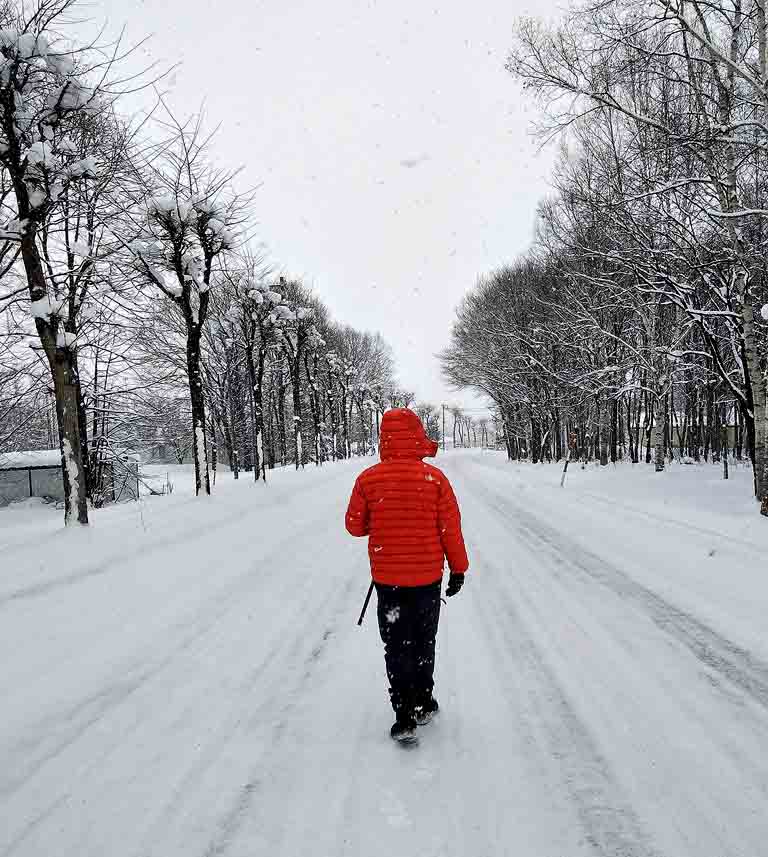
- Wear sturdy footwear designed for snow and ice. Boots should have a good tread for traction with low and wide heels. Check out this handy guide for buying proper winter footwear.
- Use snow tires. They do make a real and measurable difference.
- Slow down on the road. Give yourself extra time to arrive at your destination. Drive for the conditions and make sure you give plow drivers plenty of space to do their work.
- Use a traction aid like kitty litter or sand to reduce the potential to slip. Keep some in your car for emergencies if you get stuck.
To keep your driveway and sidewalk clear of snow and ice:
- Shovel first. When you remove snow and ice by shoveling, you’ll need less salt and it can be more effective. Get out there as early as you can and keep up with storms. You may even decide that salt isn’t needed.
- For icy patches use a traction aid like kitty litter or sand to reduce the potential to slip. Sprinkle de-icing material on icy areas only, and follow the manufacturer’s instructions for working temperatures and application rates. Give de-icing material time to do its work.
- Prevent icy buildups by redirecting downspouts away from walkways and driveways. Shovel unsalted snow to lower areas or onto lawns to direct melting snow away from paved areas.
- If hiring a snow removal contractor to clear driveways or lots, use certified contractors trained in reducing salt use while maximizing effectiveness and safety.
Sodium levels are already high in Lake Couchiching raw water. Winter road salt just adds to it. Let’s do our part.
A QUIZ: PERCEPTION VS. REALITY
The planet is barreling toward 1.5 degrees of global warming as soon as 2030 unless we enact “unprecedented changes in all aspects of society,” a United Nations report has warned.
To reduce our impact on the climate and avert disaster will take more than switching to high-efficiency light bulbs and the most effective ways individuals, policymakers and businesses can reduce our carbon footprint might surprise you.
Let’s see how much you know about what can be done to fight climate change. Which of the following actions with regard to our food do you think would have the biggest effect on curbing climate change?
- Compost waste
- Eat a plant-heavy diet
- Cook over clean stoves
- Throw away less food
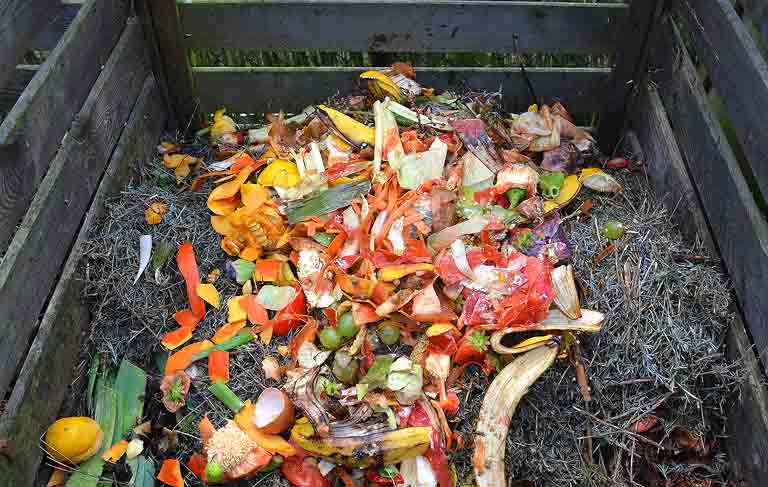
According to Project Drawdown which ranked solution effectiveness, reducing food waste would be most effective.
- Throwing away less food is similar to taking 511 cars off the road
- Eating a plant-heavy diet is similar to taking 479 cars off the road
- Cooking over clean stoves is similar to taking 115 cars off the road
- Composting waste is similar to taking 16.5 cars off the road
What else can we do within our own households to take more cars off the road? We’ll have more quizzes in other categories in future tips from Sustainable Orillia.
WORK SMARTER
In post-pandemic Orillia, some workers will be seeking opportunities in a different and likely more competitive job market. In addition, over time, advances in artificial intelligence are destined to replace many traditional jobs. Could this new transformed work environment present opportunities to test a four-day work week?
Over the centuries, work practices have changed dramatically from slavery and child labour to 12-hour days and seven-day workweeks to our current system, which itself is a relic of the 20th century. The standard five-day workweek was implemented after the Second World War. Now another shift is on the horizon.
Europe, Australia and New Zealand are ahead of North America in offering four-day workweeks. Where these have been implemented, employees report their lives have improved. They have time to rest, pursue other interests, explore nature, volunteer, enjoy the company of family and friends, and much more. “Life isn’t about making more money so we can keep buying more stuff; it’s about having time to do things that enrich our lives… rather than endlessly chasing a consumerist dream based on the illusory premise that a finite planet can support endless growth,” David Suzuki said.
There is evidence to suggest that four-day workweeks are good for both employers and employees, boosting employment levels and increasing performance and motivation. Reduced work hours, flexible schedules and telecommuting can also cut pollution and greenhouse gas emissions. The state of Utah gave government workers a four-day workweek from 2007 to 2011 (it was ended by a change in government) and concluded it saved $1.8 million in energy costs in the first 10 months and reduced greenhouse gas emissions by about 10,900 tonnes a year.

During the pandemic, many people have worked from home, often with flexible schedules, and learned to use technology for meetings and communication. Many say that they want to continue the practice post-pandemic.
Liz Supinski of the Society for Human Resource Management said, “we do anecdotally see more organizations interested in having the conversation to understand how it works,” although she concedes it doesn’t suit every work situation. Employers must have serious logistics in place, be able to respond to customers and still compete.
For example, customer-facing retail and hospitality job fields aren’t well suited to four-day workweeks and other flexible work-hour arrangements. “People expect the doors to be open all the time and to be able to go to the restaurant whenever they want,” Supinski said. “It’s not that flexible initiatives can’t be done; it gets more complex.”
However, she also said, “retention is the number one priority for employers,” and “generally speaking, work-flex variations are one of the least expensive ways to make employees happier.”
Employees should not be afraid to raise the issue of a four-day workweek with their boss. Research indicates that companies get productivity improvements and see fewer sick days. Employees should approach their boss with the economic argument, not just with the work-life balance argument.
Will private businesses in Orillia consider this shift? Will the City of Orillia? With many searching for a new and better normal once the pandemic is under control, the four-day workweek could be part of the life to follow.
IS SINGLE USE PLASTIC BAN ENOUGH?
The Canadian government recently announced it intends to ban plastic bags and other single-use plastics across Canada by the end of 2021. The ban includes straws, drink stirrers, six-pack soda can rings, utensils, and food containers. This ban is part of Canada’s commitment to achieving zero plastic waste by 2030.
“Plastic pollution threatens our natural environment. It fills our rivers or lakes, and most particularly our oceans, choking the wildlife that lives there. Canadians see the impact that pollution has from coast to coast,” said Jonathan Wilkinson, Canada’s Minister of Environment and Climate Change. The Canadian government has estimated that three million tons of plastic are wasted each year, and of this only nine percent is recycled. This is “the equivalent of 570 garbage bags full of plastic every minute, every day.”
There is plenty of evidence to suggest that this ban is totally inadequate if we are concerned about the health of the planet, of its oceans, and of the human population.
While it is understandable the government would give businesses and industry the opportunity to adjust to the banning of these materials, one has to wonder at the timidity of this first move.
Where, for example, is the ban on single-use water bottles? In Canada, estimates show, we consume two billion water bottles per year—about 5.3 million per day—and about 22 million pounds of plastic makes its way into the Great Lakes every year.
Does the ban include Keurig single-use coffee pods? Tim Horton takeout coffee cups? The plastic wrap around two peppers at the grocery store? The plastic wrap around single cookies or a piece of brownie for sale at your neighbourhood convenience store? The plastic containers around olives, blueberries, strawberries and many other fresh fruits and vegetables?
Take a look around you right now at your place of business or in your kitchen.
Notice how dependent we have become on plastic of all kinds. Records show in 2016 plastic companies produced 335 million metric tonnes of plastic, 50% of which went to single uses. It is likely the number has increased each year since.
We also now know that one of the ingredients of plastic, bisphenol A (or BPA), is harmful to humans in a variety of ways. We know that plastic can be found in each and every one of us, and many of us are adding more to our bodies every time we drink from a plastic bottle or eat from a plastic takeout tray.
By 2030, says the Canadian government? Should we wait that long? What can each of us do? First of all, take action for yourself. We tend to use plastic daily without really thinking about it. Think about it today – and every day. Find ways to live without single use plastics.
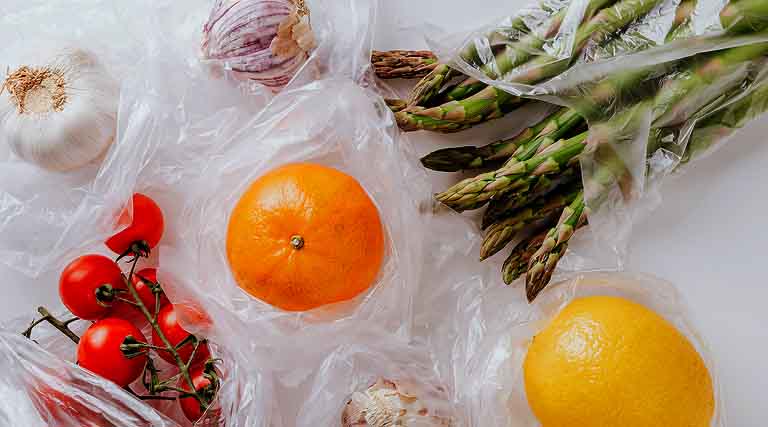
And speak up. Is your grocery store wrapping ever more veggies in plastic? Using more and more bags and plastic containers for the fruits on the shelves? Let the management know that you’re not impressed with their disdain for the planet – not to mention the health of their customers (that BPA, you know).
There is good reason to believe our planet and the living things on it, our lakes, oceans and us will eventually drown in plastic if we don’t start taking steps to end its use.

